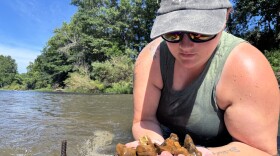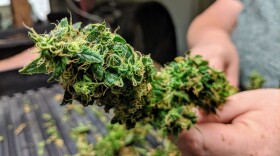-
The announcement that Tyson would shutter a massive beef processing plant in Nebraska was the first such closure in more than a decade. Beef processors are running at lower capacity, as the U.S. cattle herd size is the smallest it's been since the 1950s.
-
The massive tax and spending law signed in July halts a federal incentive for residential solar, and homeowners and installers are hurrying to complete projects before the end of the year. Industry experts say there are other ways to cut costs like "group buys."
-
Most of the package is earmarked for row-crop producers. It aims to help farmers – especially those who grow soybeans – balance out losses from high costs and a trade war with China.
-
Cottonseeds could help reduce hunger and add new revenue for farmers. One researcher has been working for decades to make edible seeds a reality.
-
Some tree farms in the central U.S. are selling more potted Christmas trees as people seek out an eco-friendly option or look to get more than one use out of their evergreens.
-
Deep Fission says it plans to install a nuclear reactor underground at an industrial park in southeast Kansas. State and local government leaders are on board. It’s part of a national push for new nuclear energy generation.
-
The program provides a long-term look at water quality in some of Missouri's most famous lakes. It will end in 2027 after a state agency will no longer provide federal funding.
-
Kansas hemp growers and processors say the new, stricter federal law could derail the entire industry. The state has grown to one of the top five hemp producing states in the country.
-
The first snow of the season started falling early Monday morning, leaving roads slick and slowing down city services across the metro. Trash pickup around Kansas City has been delayed by a day, while streets are still being cleared.
-
The lesser prairie chicken was once a common sight in the southern Great Plains, but its numbers are dwindling. Even so, it lost federal protections earlier this year for a second time. Now states and landowners are overseeing conservation efforts
-
Public works has invested substantially in their training equipment ahead of the winter season, with new, upgraded technology to prepare employees for plowing snow in any circumstance.
-
The Lawrence Old-Fashioned Christmas Parade normally features dozens of human and horse participants from across the region. The Dec. 6 event is now canceled because of the virus outbreak affecting eight states.
-
Conservation methods can help rejuvenate farmland, but the startup cost and uncertain results mean a risk many farmers still aren't willing to take. The University of Missouri Center for Regenerative Agriculture is trying to research how to improve the practice.
-
Congress extends critical Farm Bill for a third time. It's a relief for farmers, but raises concernsThe federal funding package to reopen the government included a one-year extension of certain 2018 Farm Bill programs. Several expired Sept. 30 or would have been null by the end of the year.

















